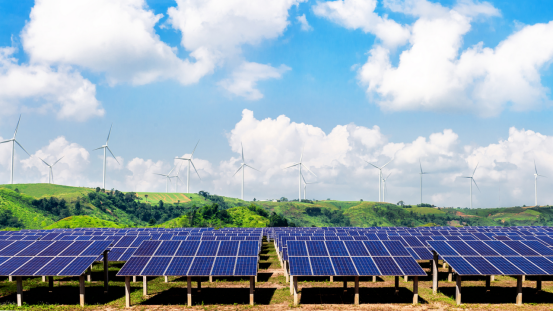Photovoltaic energy storage systems, commonly referred to as PV storage systems, encompass applications involving photovoltaic modules and related equipment such as energy storage batteries. Based on the need for grid connection for energy sales, PV storage systems can be divided into off-grid PV systems and hybrid PV systems (grid-connected/off-grid). Here, we focus on some design considerations for off-grid PV systems.
**Components of Off-Grid PV Systems:**
Off-grid PV systems typically consist of photovoltaic modules, off-grid inverters (including PV chargers/inverters), energy storage batteries (lead-acid/gel/lead-carbon/lithium-ion/lithium iron phosphate, etc.), PV mounting structures, cables, and distribution boxes. Each component plays a crucial role in the functionality of the off-grid PV system.
The primary difference between off-grid and grid-connected systems lies in their operational objectives. While grid-connected systems prioritize investment returns, off-grid systems prioritize meeting basic power supply needs. Consequently, their component selection focuses on different aspects.
**Component Considerations:**
**Photovoltaic Modules:**
Initially, photovoltaic modules were mainly used in off-grid systems and small-scale PV systems. However, with the widespread adoption of grid-connected PV applications and annual advancements in module technology, the efficiency of photovoltaic modules has greatly improved. Some large-scale grid-connected power stations, in particular, require more efficient modules to maximize return on investment. On the other hand, off-grid systems typically have larger available spaces and less stringent efficiency requirements, making conventional modules the primary consideration during system design.
**Off-Grid Inverters:**
1. **Consideration of AC Loads:** Loads generally fall into three categories: resistive loads (e.g., lighting, heaters), inductive loads (e.g., air conditioners, motors), and capacitive loads (e.g., computer power supplies). Notably, the startup current required by inductive loads is typically three to five times the rated current. Off-grid inverters with 150%-200% short-term overload capacity may not suffice for inductive loads, necessitating special considerations for inverter capacity (off-grid inverters connected to inductive loads should have a system design capacity at least twice the inductive load). For instance, in projects where off-grid inverters drive 2P (2*750W) air conditioners, inverters with a rated power of 3KVA or higher are recommended for normal operation.
2. **Consideration of DC Side:** Off-grid inverters typically incorporate photovoltaic chargers, available in two types: MPPT and PWM. With technological advancements, PWM chargers are gradually being phased out in favor of MPPT chargers.
3. **Other Considerations:** In addition to the above two selection methods, there are many calculation formulas available in the market. However, the general approach is as follows: 1) Determine the rated power of the off-grid inverter based on the size and type of loads; 2) Determine the kWh value of the energy storage battery pack based on the discharge duration required by the loads; 3) Determine the charger power based on local sunlight conditions and charging time requirements (e.g., requiring full charge within one average day).
**Energy Storage Batteries:**
1. **Lead-Acid/Gel Batteries:** Energy storage systems typically opt for maintenance-free sealed lead-acid batteries to reduce post-installation maintenance. With 150 years of development, lead-acid batteries boast significant advantages in stability, safety, and cost-effectiveness. They are not only the most widely used battery type in energy storage applications but also the preferred choice for off-grid PV systems.
2. **Lead-Carbon Batteries:** Evolved from traditional lead-acid batteries, lead-carbon technology involves adding activated carbon to the negative electrode of lead-acid batteries, significantly extending their lifespan. However, as a newer technology compared to lead-acid batteries, lead-carbon batteries come at a slightly higher cost.
3. **Lithium-Ion/Lithium Iron Phosphate Batteries:** Compared to the aforementioned battery types, lithium-ion batteries offer higher power density, more charge-discharge cycles, and better depth of discharge. However, due to the need for additional battery management technology (BMS), the system cost of lithium-ion/lithium iron phosphate batteries is generally 2-3 times that of lead-acid batteries. Additionally, their thermal stability is slightly inferior to that of lead-acid/lead-carbon batteries. Consequently, their application in off-grid PV systems is relatively low. Nevertheless, with breakthroughs in technology, the market share of lithium-ion/lithium iron phosphate batteries is gradually increasing, indicating a new trend in their application.
**Conclusion:**
In summary, we have provided a brief introduction to the basic applications of photovoltaic energy storage systems, specifically off-grid PV systems, and offered some recommendations for selecting basic equipment. This information serves as a reference for professionals in the photovoltaic industry.
If you're interested in learning more about our solar energy storage offerings, we encourage you to explore our product line. We offer a range of panels and battery that are designed for various applications and budgets, so you're sure to find the right solution for your needs.
Website:www.fgreenpv.com
Email:Info@fgreenpv.com
WhatsApp:+86 17311228539
Post time: Jan-30-2024












